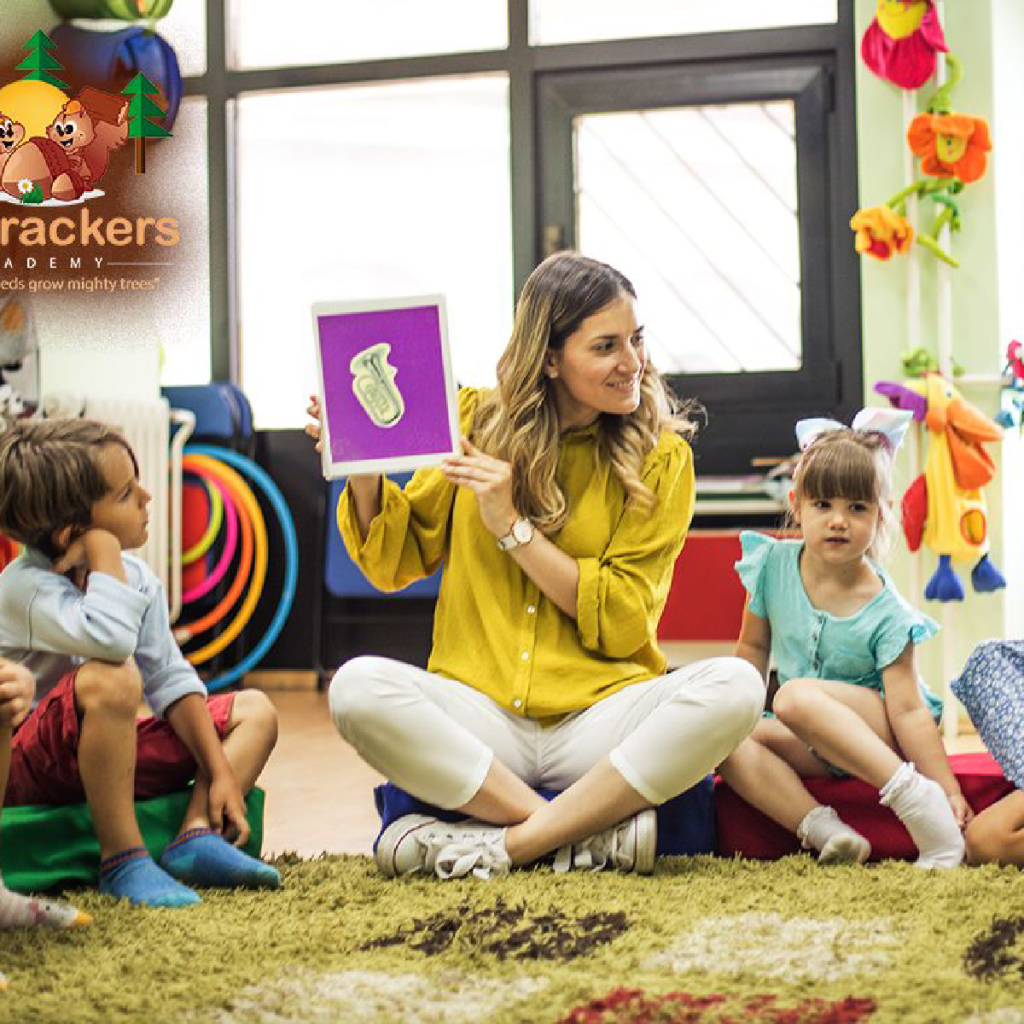Discover effective tips and strategies for handling disobedience in daycare settings.
How to Handle Disobedience in Daycare: Tips and Strategies
Raising children can sometimes feel like taming wild animals. They have a knack for testing boundaries, pushing limits, and being defiant when you least expect it. Now, imagine having to control not just one or two of these little rebels, but an entire daycare filled with them. The thought alone can be overwhelming. But fear not! In this article, we will dive into the fascinating world of disobedience in daycare and explore some effective tips and strategies to handle it like a pro. So, roll up your sleeves, put on your superhero cape, and let’s get started!

Understanding the Roots of Disobedience
Before we can conquer disobedience, we must first understand its roots. Disobedience in daycare settings is often a byproduct of children navigating through various developmental stages. One moment, they’re sweet angels, and the next, they’re tiny rebels with a cause. It’s important to remember that these stages are a normal and essential part of their growth.
During the early years of a child’s life, they go through significant cognitive, emotional, and social development. These changes can sometimes lead to a sense of independence and a desire to test boundaries. As they explore their newfound abilities and assert their autonomy, disobedience may arise as a way for them to assert their individuality and challenge authority.
Furthermore, the environment plays a significant role in shaping behavior. Children are highly influenced by their surroundings, absorbing everything like sponges. If they observe chaotic or inconsistent patterns, their own behavior may reflect this disarray. On the other hand, a structured and nurturing environment can help set the stage for smoother sailing.
Providing a consistent routine and clear expectations can help children feel secure and understand what is expected of them. When they know what to anticipate, they are more likely to feel in control and less inclined to act out. Additionally, creating a positive and supportive atmosphere can foster a sense of trust and cooperation, reducing the likelihood of disobedient behavior.
It’s also important to recognize that disobedience can sometimes be a form of communication. Children may act out when they are feeling overwhelmed, frustrated, or misunderstood. By actively listening to their needs and emotions, caregivers can address underlying issues and help children develop healthier ways of expressing themselves.
Another factor to consider is the influence of peers. Children often learn from and imitate their friends, which can either reinforce positive behaviors or lead to disobedience. Encouraging healthy social interactions and teaching conflict resolution skills can help children navigate peer relationships in a constructive manner.
Lastly, it’s crucial to remember that every child is unique. What works for one child may not work for another. Understanding and respecting individual differences in temperament, learning styles, and developmental progress can go a long way in addressing disobedience effectively.
Effective Communication Techniques
When it comes to managing disobedience, effective communication is key. Positive reinforcement is a fantastic tool in your arsenal. By acknowledging and rewarding good behavior, you’ll create a culture where children strive to please and cooperate. Remember, a little praise can go a long way!
In addition to positive reinforcement, setting clear expectations and boundaries is essential. Kids are constantly testing limits, so it’s crucial to establish boundaries early on. Whether it’s through gentle reminders or visual cues, make sure they know the rules of the daycare kingdom.
Now, let’s delve deeper into the world of effective communication techniques. One technique that can greatly enhance communication with children is active listening. Active listening involves giving your full attention to the child, maintaining eye contact, and responding in a way that shows you understand and value what they are saying. By actively listening, you not only make the child feel heard and understood, but you also build trust and strengthen your relationship with them.
Another important aspect of effective communication is non-verbal communication. Children, especially young ones, may not have fully developed verbal skills yet, but they are highly perceptive to non-verbal cues. Your facial expressions, body language, and tone of voice can convey a wealth of information to the child. By being aware of your non-verbal communication and ensuring it aligns with your verbal messages, you can enhance understanding and create a positive communication environment.
Furthermore, using age-appropriate language is crucial in effective communication. Adjusting your language to suit the child’s developmental level ensures that they can comprehend and engage with what you are saying. Using simple and clear language, avoiding jargon or complex terms, and breaking down information into smaller, digestible chunks can greatly improve communication and prevent misunderstandings.
Additionally, incorporating visual aids and props can be highly effective in enhancing communication. Children are visual learners, and using visual aids such as pictures, charts, or diagrams can help them better understand concepts and instructions. Props, such as puppets or toys, can also make communication more engaging and interactive, capturing the child’s attention and making the learning process more enjoyable.
Lastly, it is important to create a safe and supportive communication environment. Children need to feel comfortable expressing themselves without fear of judgment or punishment. Encouraging open dialogue, actively seeking their opinions and ideas, and validating their feelings can foster a sense of trust and encourage them to communicate more openly.
Implementing Discipline Strategies
Discipline doesn’t have to be a dirty word. Time-outs, for example, can be highly effective in redirecting a child’s behavior. Creating a designated space for them to reflect and calm down can work wonders. But remember, time-outs should always be accompanied by an explanation of why their behavior was inappropriate and how they can improve.
When implementing time-outs, it’s crucial to consider the age and temperament of the child. For younger children, a shorter time-out period may be more appropriate, while older children may benefit from a longer period of reflection. Additionally, the time-out space should be safe and free from distractions, allowing the child to focus on their thoughts and emotions.
Furthermore, it’s important to approach time-outs with a calm and composed demeanor. Reacting with anger or frustration may escalate the situation and hinder the effectiveness of the discipline strategy. By modeling self-control and emotional regulation, parents can teach their children valuable skills for managing their own behavior.
Natural consequences can also be powerful teachers. For example, if a child refuses to eat their snacks, they may soon feel the natural consequence of hunger. However, it’s crucial to approach these consequences with empathy and understanding. Instead of letting the child go hungry as a form of punishment, parents can use this opportunity to engage in a conversation about the importance of nourishing their bodies and making healthy choices.
When implementing natural consequences, it’s essential to strike a balance between allowing the child to experience the outcome of their actions and providing guidance for future decision-making. By discussing the consequences in a supportive manner, parents can help their children connect their behavior with the outcomes they experience.
Moreover, it’s important to remember that discipline should not be solely focused on punishment. It should also involve teaching and guiding children towards positive behavior. By setting clear expectations, establishing consistent routines, and praising their efforts, parents can create an environment that promotes self-discipline and self-motivation.
In conclusion, implementing discipline strategies involves more than just time-outs and natural consequences. It requires parents to consider the individual needs and developmental stage of their child, approach discipline with empathy and understanding, and focus on teaching and guiding rather than solely punishing. By doing so, parents can help their children develop important life skills and foster a positive parent-child relationship.
Building a Positive Daycare Environment

A positive daycare environment can make a world of difference in curbing disobedience. Fostering respectful relationships between children and caregivers creates a sense of trust and security. When kids feel seen and valued, they are more likely to comply with rules and expectations.
Consistent routines are another essential ingredient for success. Providing a predictable daily schedule helps children feel secure and in control. It also minimizes confusion and reduces the likelihood of disruptive behavior.
Creating a positive daycare environment involves more than just building relationships and establishing routines. It also requires a focus on promoting social and emotional development in children. Daycare providers can incorporate various activities and strategies to enhance these skills.
One effective approach is to encourage cooperative play among children. By engaging in activities that require collaboration and teamwork, children learn valuable social skills such as sharing, taking turns, and resolving conflicts peacefully. This not only helps in reducing disobedience but also fosters a sense of community and belonging.
In addition to cooperative play, incorporating art and creative expression can have a positive impact on children’s emotional development. Providing opportunities for children to engage in art activities, such as painting, drawing, and sculpting, allows them to express their feelings and emotions in a safe and constructive manner. This can help prevent disruptive behavior that may arise from unexpressed emotions.
Furthermore, creating a daycare environment that promotes positive behavior through positive reinforcement is crucial. Recognizing and praising children for their efforts and achievements can boost their self-esteem and motivation to behave well. This can be done through verbal praise, stickers, or small rewards, which can serve as powerful incentives for children to follow rules and exhibit positive behavior.
Another aspect of building a positive daycare environment is providing a variety of stimulating and age-appropriate activities. Offering a range of play materials, books, puzzles, and outdoor play equipment can keep children engaged and prevent boredom or restlessness, which can lead to disobedience. By providing a stimulating environment, daycare providers can create opportunities for children to explore, learn, and develop their cognitive and physical skills.
Lastly, effective communication with parents is essential in maintaining a positive daycare environment. Regularly sharing updates, discussing any concerns or challenges, and seeking parental input can help create a collaborative and supportive partnership between parents and daycare providers. This open line of communication allows for a holistic approach to addressing any behavioral issues and ensures that parents are involved in their child’s development and well-being.
Engaging with Parents and Guardians
Communication with parents and guardians is a crucial part of managing disobedience in daycare. Establishing open lines of communication allows for a collaborative approach to behavior management. By sharing insights, observations, and strategies, parents and caregivers can work together as a team.
Creating behavior management plans can be a game-changer. When everyone is on the same page, consistency becomes easier to maintain. Collaborate with parents and guardians to develop strategies that reinforce expectations both at the daycare and at home.
As we conclude this wild journey through the realm of disobedience in daycare, remember that every child is unique. What works for one may not work for another. But armed with these tips and strategies, you’ll be well on your way to becoming a superhero in the world of daycare. So, go forth, embrace the chaos, and may the power of patience and understanding be forever on your side!



